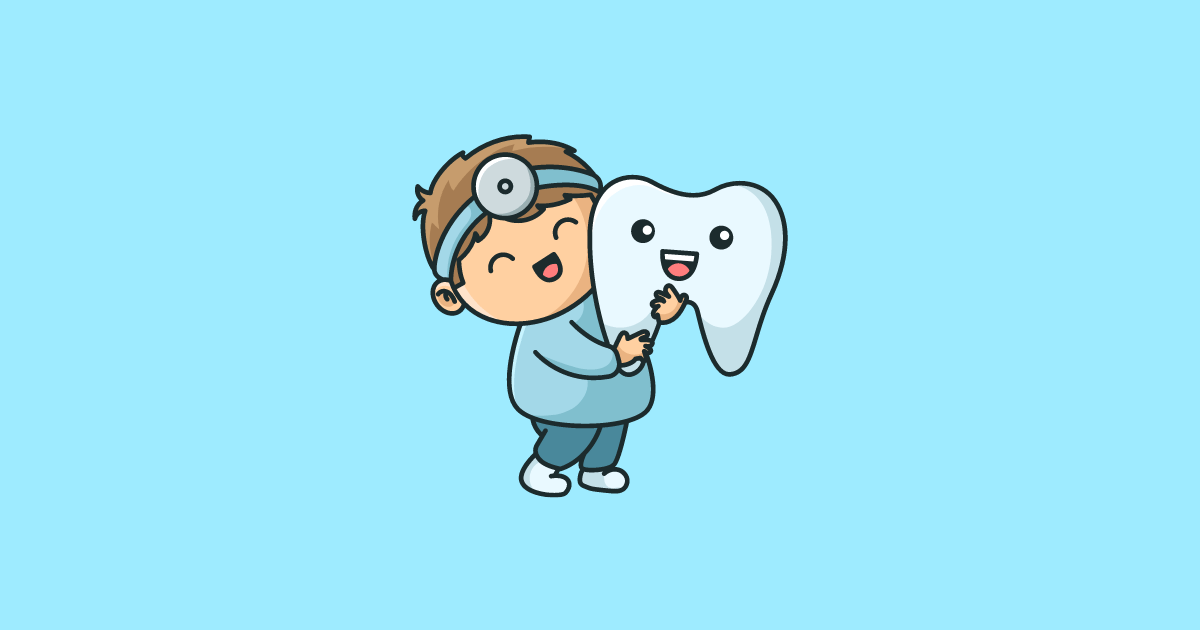Dental emergencies in children can be very stressful for parents. If your lovely child is experiencing severe tooth pain, it’s crucial to seek immediate help. This article, ‘How to find an emergency pediatric dentist near me’, will guide you in understanding pediatric dental emergencies and how to find fast care for your child.
What Constitutes a Pediatric Dental Emergency?
Here are common scenarios that require urgent dental attention:
- Knocked-out teeth: Time is of the essence! The sooner a permanent tooth is reimplantation by a dentist, the greater the chance of survival. Delays can lead to damage to the root and tooth loss.
- Severe toothaches: Persistent, throbbing pain often indicates an infection in the tooth or gums. Left untreated, infections can spread and cause serious complications.
- Abscesses: Abscesses are excruciatingly painful and can quickly spread infection to the jawbone, face, or even bloodstream if not treated promptly.
- Broken or cracked teeth: These can cause pain and bleeding and expose the inner pulp of the tooth to bacteria, increasing the high risk of serious infection. Additionally, depending on the severity of the break, the tooth may require extraction or complex restorative procedures.
- Facial swelling: Swelling around the face or jaw can be a severe infection or trauma symptom. Sometimes, it might indicate difficulty breathing, which requires immediate medical attention.
Early Intervention for Optimal Outcomes
By seeking urgent care for these emergencies, you can:
- Minimize pain and discomfort for your child.
- Increase the possibility of saving a damaged tooth.
- Prevent the spread of infection.
- Avoid the need for more complex and expensive treatments down the line.
Remember, early intervention is key! If you suspect your child has a dental emergency, don’t hesitate to get help from a dentist or emergency room (for severe trauma or breathing issues).
Additional Considerations
- This section can be tailored to include age-specific information on pediatric dental emergencies. For instance, very young children might not be able to verbalize pain effectively, so parents should be extra vigilant for signs of fussiness or changes in eating habits.
- Including visuals like pictures of abscesses or cracked teeth can further enhance understanding.
When to Take Action
Assessing dental emergencies can be difficult, especially when your child is in pain. Here’s a guide to help you determine the urgency of the situation:
Seek Immediate Dental Care If:
- Bleeding that won’t stop: Apply light pressure with a clean gauze, but persistent bleeding needs professional attention.
- Knocked-out permanent tooth: Find the tooth and follow instructions (see Section 5). Time is critical.
- Severe, throbbing toothache: This likely signals an infection needing urgent treatment.
- Abscess or facial swelling: Infections demand prompt, professional care to prevent them from spreading.
- Broken/cracked tooth causing sharp edges or pain: These need evaluation to prevent cuts or further damage.
- Difficulty Swallowing or Breathing: Go to the ER, as this suggests a medical emergency beyond a dental problem.
Consult Your Dentist (even during non-office hours) If:
- Toothache with fever: A fever indicates infection, so contact your dentist for guidance.
- Broken/cracked tooth without pain or sharp edges: A dentist can assess if it needs immediate attention.
- Minor bleeding or swelling: Your dentist can offer advice on managing these at home and determine if an in-person visit is needed.
- If you’re unsure, never hesitate to call your dentist for guidance on any dental issue.
Home Care While Awaiting Help
- Pain Management: Age-appropriate ibuprofen or acetaminophen. Cold compresses may help.
- Knocked-out tooth: Follow specific care instructions.
- Remember: Home remedies (HR) are NOT a substitute for professional treatment!
Important Notes
- Trust your instincts! If you’re worried, contact a dentist. Better to be safe than to let a problem worsen.
- Having an emergency dentist’s number on hand provides peace of mind.
How to Find an Emergency Pediatric Dentist Near Me
Finding the right dentist during an emergency can be incredibly stressful. Here’s a step-by-step guide to help you locate care, even if you haven’t planned ahead:
Step 1: Online Resources
- Specialized Directories: Search for “emergency pediatric dentist near me” on websites specifically meant for finding care in urgent situations. Examples (if available for your location): [Include any relevant directories].
- General Dental Directories: Even general dentist websites often have “find an emergency dentist” functions that may include pediatric specialists.
Step 2: Leverage Professional Organizations
- Local Dental Association: Check their website or call their hotline if they have one. They often maintain lists of emergency providers.
- American Academy of Pediatric Dentistry (AAPD): Their website (aapd.org) features a “Find a Pediatric Dentist” tool with the option to filter by those handling emergencies.
Step 3: Utilize Your Existing Network
- Your Regular Dentist: Even if they don’t handle emergencies themselves, they may have a referral network or an after-hours answering service with recommendations.
- Pediatrician: Your child’s doctor may have a list of pediatric dentists they recommend, including those who offer emergency care.
When to Head to the Emergency Room
- Severe Trauma: Major accidents involving the jaw or facial bones may need ER treatment first.
- Breathing Difficulty: If the dental issue compromises breathing, seek immediate medical attention at the ER.
Proactive Preparation:
- Research in advance: Locate an emergency pediatric dentist in your area beforehand and keep their contact information readily available.
- Discuss with your regular dentist: Ask about their after-hours policy or if they can recommend an emergency pediatric provider.
Additional Tips
- Don’t Panic: While stressful, remember you have options. Follow these steps methodically.
- Call Ahead: Once you find a provider, call to confirm they can see your child and explain the emergency.
- Insurance: If possible, check if a potential emergency provider is in your insurance network (IN) to avoid surprise costs later.
What to Expect at the Emergency Appointment– Relief and Reassurance
Pediatric dentists specialize in handling both dental problems and children’s anxieties. Here’s what you can generally expect:
Assessment:
- Detailed Examination: The dentist will carefully examine your child’s mouth, teeth, and gums to identify the cause of the pain or problem.
- Questions about the Situation: Be prepared to explain when the pain started, any injuries involved, and anything that temporarily relieves the pain.
- X-rays (if needed): These may be necessary to understand the extent of damage or check for underlying infections.
Pain Management and Child-Friendly Approach:
- Prioritizing Comfort: Your child’s pain relief is the top priority. Dentists may use topical numbing agents, age-appropriate pain medications, and calming techniques.
- Child-Centred Communication: Pediatric dentists understand how to explain procedures in a way that reduces fear and helps your child feel in control.
- Parental Involvement: You may be able to stay with your child during the procedures to provide comfort and support.
Treatment – Addressing the Urgent Issue:
- Wide Range of Solutions: The treatment depends on the specific emergency but could include:
- Reimplanting a knocked-out tooth
- Filling a broken or chipped tooth
- Draining an abscess and prescribing antibiotics
- Extracting a severely damaged tooth
- Addressing facial trauma in cooperation with other medical professionals (for severe cases)
Follow-Up and Aftercare:
- Instructions: The dentist will provide clear instructions for home care, including pain management, wound cleaning, and dietary changes if needed.
- Potential Future Appointments: Depending on the treatment, your child may need a follow-up visit for further procedures or monitoring.
Important Notes:
- Procedures are Tailored: Every child and dental emergency is unique, so the exact steps might vary.
- Communication is Key: Don’t be afraid to ask questions throughout the process. Understanding what’s happening can be reassuring for both you and your child.
Home Care While Waiting for Help
While waiting for your emergency appointment, here are some things you can do to manage pain and stabilize the situation, if applicable.
General Pain Management
- Over-the-counter Medications: Age-appropriate doses of ibuprofen (Advil, Motrin) or acetaminophen (Tylenol) can offer relief. Follow the dosing instructions carefully.
- Cold Compress: Always apply a cold compress or ice wrapped in a towel (cotton towel) to the affected cheek for short intervals (15-20 minutes on, then off).
- Saltwater Rinse: For older children, a gentle rinse with warm salt water can temporarily reduce discomfort. (1/2 teaspoon of salt(NaCl) in a glass of water)
Specific Situations
- Knocked-out Tooth: When handling a knocked-out tooth, grab it by the hard, white crown, the part you usually see when your child smiles. The root is more delicate, so it’s best to avoid touching it.
- Gently rinse with milk or cool water (NO soap or harsh scrubbing).
- Try to place the tooth back into the socket. If not possible, store it in milk or the child’s saliva (inside the cheek).
- Seek a dentist immediately.
- Broken/Cracked Tooth: Rinse mouth with warm water to remove any debris.
- Apply a cold compress if there’s swelling.
- Contact your dentist for guidance.
- Bleeding: Apply gentle pressure with clean gauze. If bleeding doesn’t stop or is severe, seek urgent care.
Important Reminders:
- Home care is not a replacement for professional treatment. These steps mainly aim to provide temporary relief until you get to the dentist.
- Always call your dentist for specific advice tailored to your child’s situation.
- Follow the dentist’s instructions carefully after the appointment for continued pain management and wound care.
Additional Tips:
- Soft Foods: If eating, offer soft, easy-to-chew foods while waiting for the appointment.
- Distraction: Calm activities can help ease your child’s anxiety.
Conclusion
Severe tooth pain in children shouldn’t be ignored. Knowing what situations are urgent and where to find help is essential. It’s wise to locate an emergency pediatric dentist in your area in advance for peace of mind.
FAQs: Emergency Pediatric Dentist Near Me
Q: What’s the difference between a pediatric dentist and a regular dentist?
A: Pediatric dentists complete an additional two to three years of training specializing in the unique dental needs of children. They also focus on managing children’s behaviour and anxieties surrounding dental care.
Q: When should I take my child to an emergency pediatric dentist?
A: Seek emergency care for knocked-out permanent teeth, severe and lasting toothaches, abscesses (swollen gums with pus), broken or cracked teeth causing pain, and any facial swelling. If you’re unsure, call your dentist for advice.
Q: How do I find an emergency pediatric dentist quickly?
A: Search online directories: Specialized websites list emergency dentists, including those for children.
- Check your local dental association: They often have lists of emergency providers.
- Call your regular dentist: They may provide after-hours care or referrals.
- Consider the ER: Only for severe trauma or complications outside a dentist’s scope.
Q: My child is scared of the dentist. What can I expect?
A: Pediatric dentists are trained in handling children’s fears. They use child-friendly language and calming techniques and often offer distractions to make the experience less stressful. You can stay with your child for support.
Q: Will my insurance cover emergency dental care?
A: Coverage varies depending on your plan. If possible, check with your insurance provider before your appointment to minimize potential surprise costs.
Q: What can I do to prevent future dental emergencies?
A: Regular checkups and cleanings: Help catch issues before they become urgent.
- Mouthguards: Protect teeth during sports or activities with injury risk.
- Healthy diet: Limit sugary snacks and drinks that can contribute to tooth decay.
Remember: Don’t ignore severe tooth pain in children. Early intervention is key for saving teeth, preventing the spread of infection, and getting your child the relief they need. Hope this article, an emergency pediatric dentist near me, will help you to solve your baby’s dental problem.





